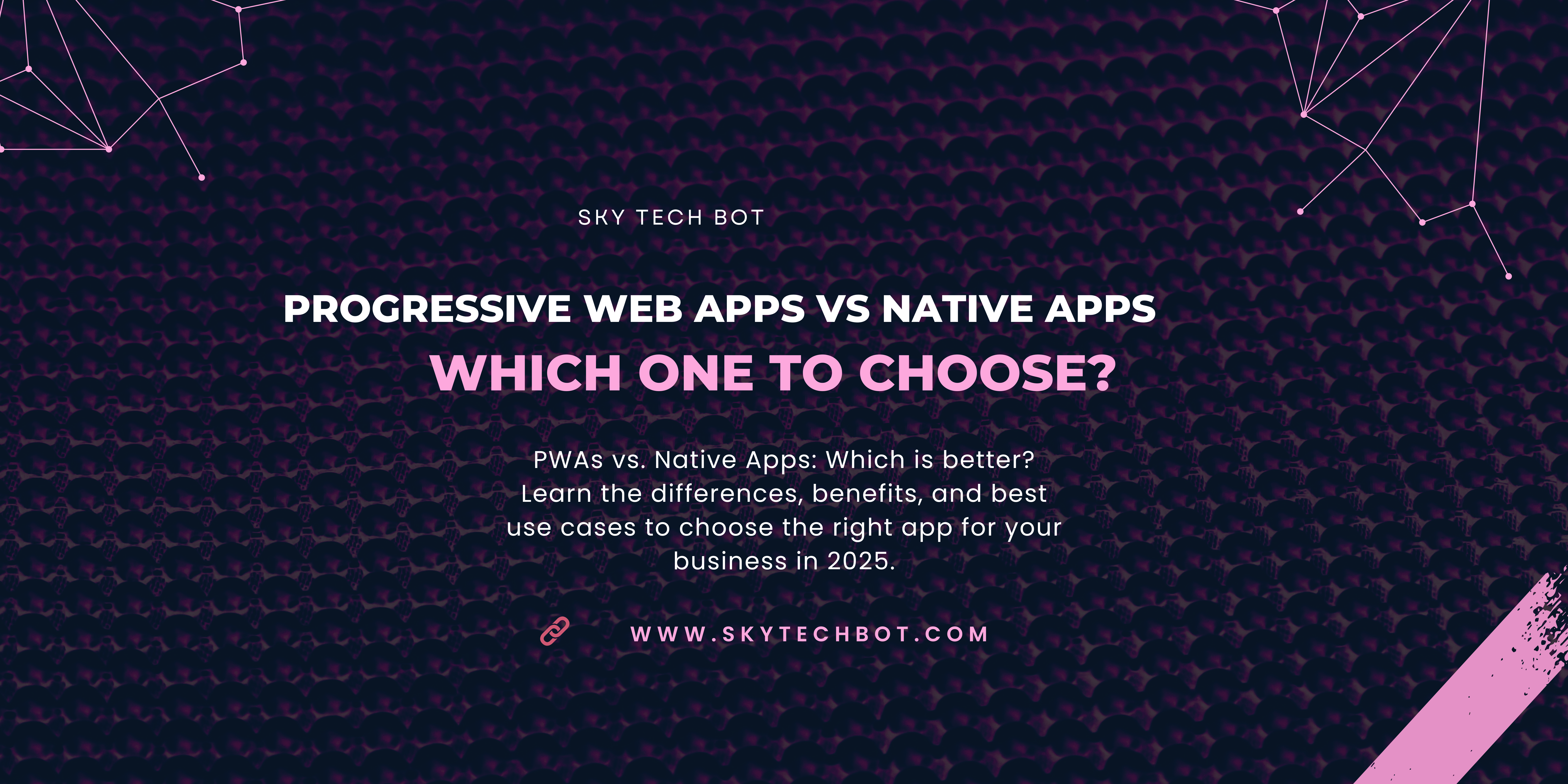With the rapid growth of mobile applications, businesses often face a crucial decision: Should they develop a Progressive Web App (PWA) or invest in a Native App? Both options have unique advantages and drawbacks, depending on your business needs, target audience, and budget.
In this comprehensive guide, we’ll compare PWAs and Native Apps, highlight their pros and cons, and help you decide the best option for your next project.
What is a Progressive Web App (PWA)?
A Progressive Web App (PWA) is a web application that delivers an app-like experience on mobile and desktop devices. PWAs use modern web technologies such as HTML, CSS, JavaScript, and Service Workers to provide fast, reliable, and engaging user experiences.
Key features of PWAs include:
- Offline functionality: Uses Service Workers to cache data.
- Responsive design: Works on all devices.
- App-like experience: Can be installed on a home screen.
- Push notifications: Engages users like native apps.
- SEO-friendly: Indexable by search engines.
What is a Native App?
A Native App is a mobile application developed specifically for a platform like iOS (Swift/Objective-C) or Android (Kotlin/Java). These apps are downloaded and installed from the App Store or Google Play Store.
Key features of Native Apps include:
- Better performance: Optimized for a specific platform.
- Access to device features: Uses GPS, camera, Bluetooth, etc.
- Stronger security: Encrypted data protection.
- Offline access: Works without internet connection.
- Personalized user experience: Can integrate advanced functionalities.
PWA vs. Native App: Key Differences
| Feature | PWA | Native App |
|---|---|---|
| Platform Compatibility | Works on all browsers and devices | Specific to iOS or Android |
| Installation | Directly added from the browser | Downloaded from App Stores |
| Performance | Slower than native apps | Optimized and high performance |
| Offline Functionality | Limited offline support | Fully functional offline |
| Push Notifications | Supported on Android, limited on iOS | Fully supported |
| Development Cost | Lower, as one codebase is used | Higher, requires separate codebases |
When to Choose a PWA vs. Native App?
Choose a PWA if:
- You need a cost-effective solution.
- Your primary audience uses web browsers.
- You want better reach and SEO benefits.
- Offline functionality is not critical.
Choose a Native App if:
- You need high performance and speed.
- You require deep integration with device features.
- Your audience prefers downloading apps.
- Security and data protection are a priority.
Real-World Examples: PWAs vs. Native Apps
Case Study: Twitter Lite (PWA)
Twitter introduced Twitter Lite, a PWA version of its app, which resulted in:
- 75% increase in Tweets sent.
- 65% increase in pages per session.
- 70% reduction in data usage.
Case Study: Uber (Native App)
Uber’s native app provides real-time tracking, GPS integration, and offline functionality, making it the best choice for a seamless ride-hailing experience.
Which One Should You Choose?
Both PWAs and Native Apps offer unique advantages. If your goal is wide accessibility, cost-effectiveness, and SEO benefits, PWAs are the way to go. However, if you need high performance, security, and advanced features, a Native App is the better choice.
Still unsure? Our team can help! Contact us today to find the best app solution for your business!
Frequently Asked Questions (FAQs)
1. Can a PWA replace a Native App?
Yes, in many cases. If your app does not require deep hardware integration, a PWA can be a great alternative.
1. Can a PWA replace a Native App?
Yes, in many cases. If your app does not require deep hardware integration, a PWA can be a great alternative.
2. Are PWAs supported on iOS devices?
PWAs work on iOS, but with limitations (e.g., no push notifications).
3. What is the cost difference between PWA and Native App development?
PWAs are cheaper as they use a single codebase, while Native Apps require separate development for iOS and Android.
4. Can PWAs be published on App Stores?
Yes, some PWAs can be wrapped and submitted to app stores using tools like PWABuilder or Trusted Web Activities (TWA).
Need help choosing between a PWA and a Native App? Let’s discus


